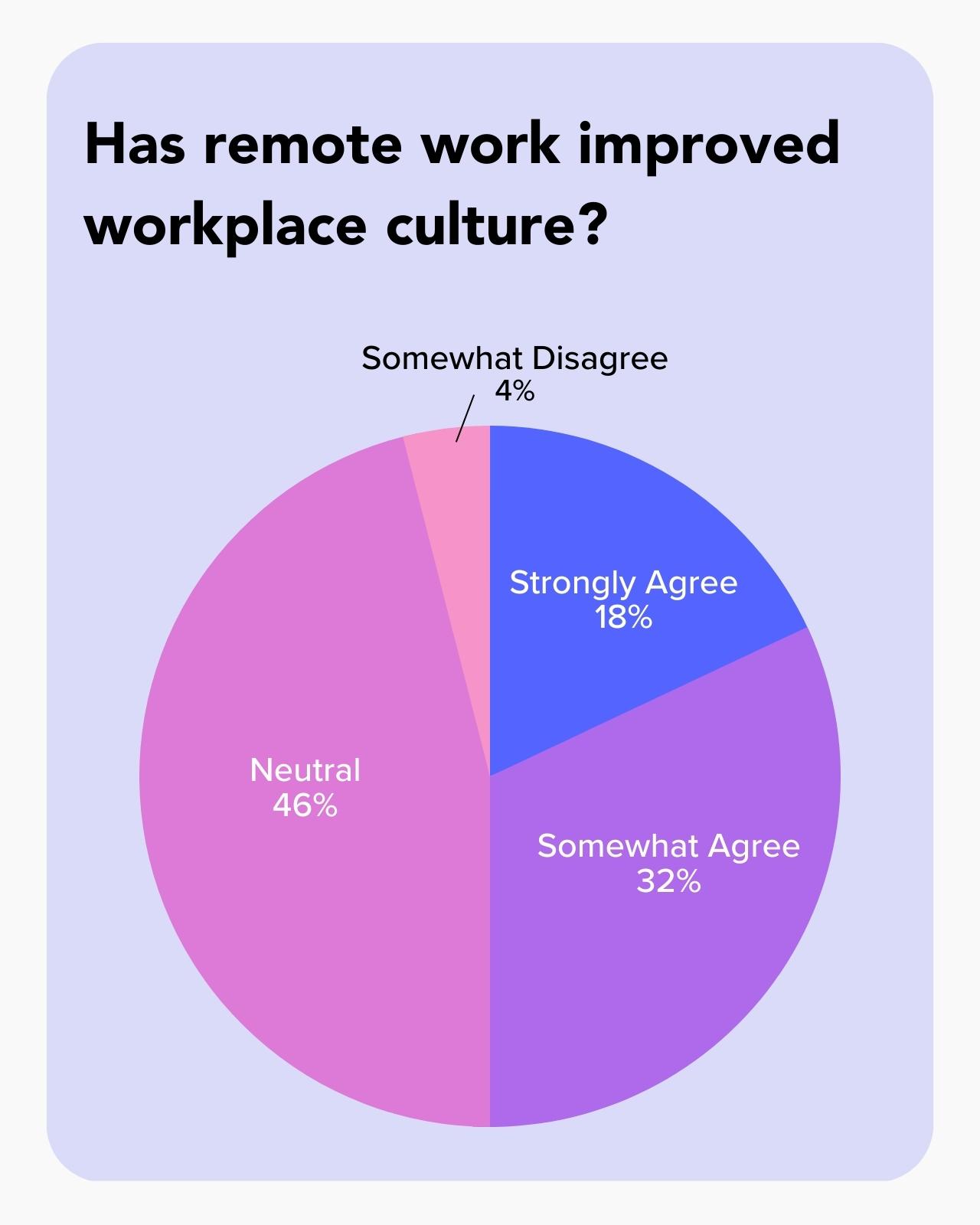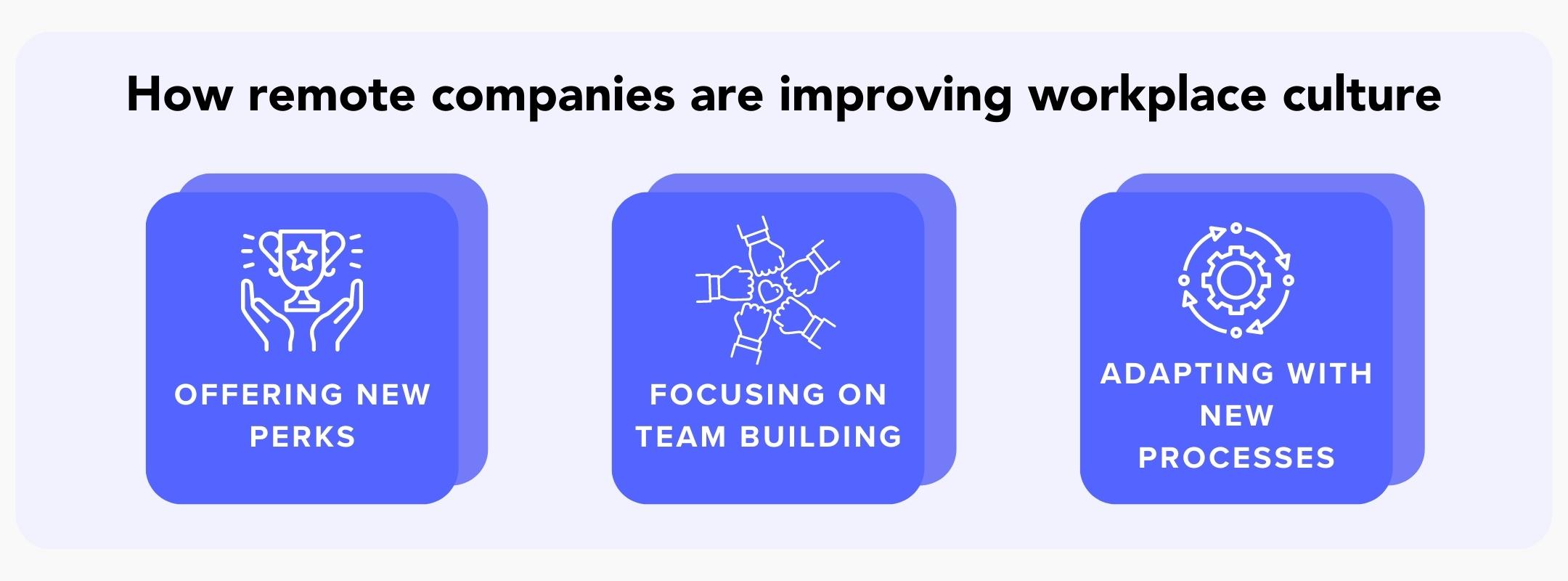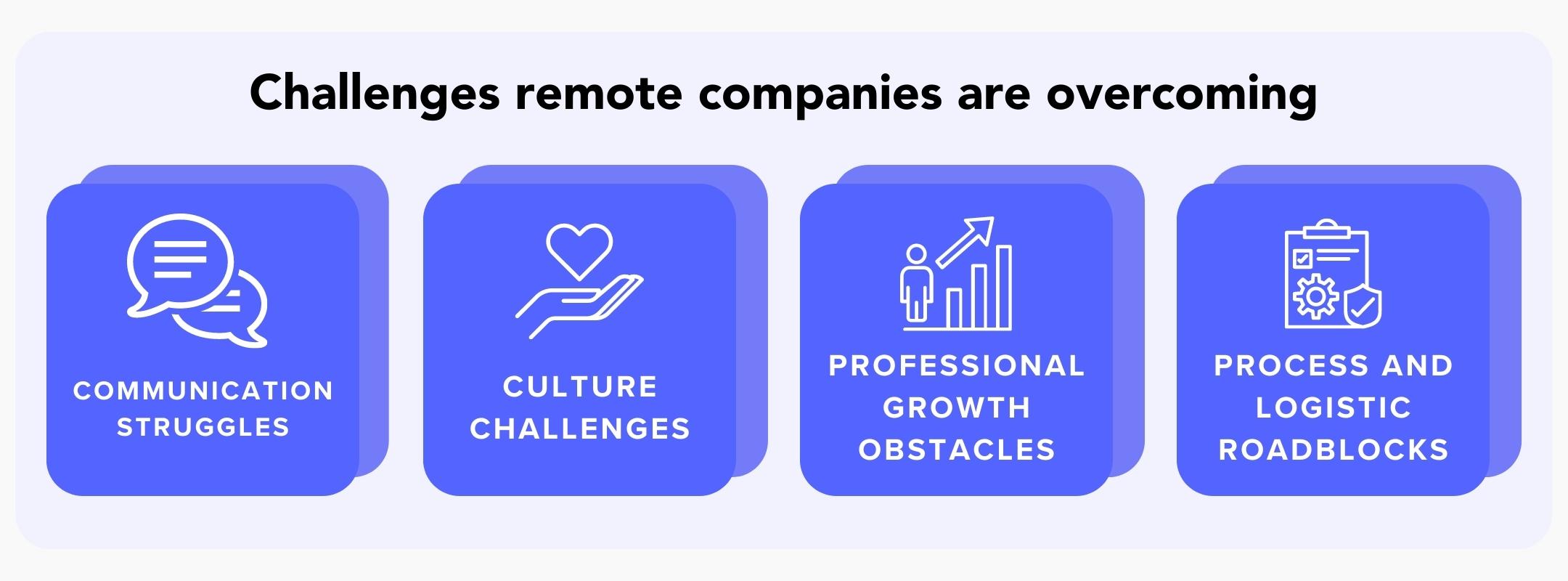It’s no secret that COVID-19 changed the way that many Americans work. According to a study from McKinsey & Company, 58% of job holders in the United States— the equivalent of 92 million people— say that they can work remotely at least part of the time.
The shift hasn’t come without its unique obstacles and challenges, however.
JobSage set out to learn how companies have adjusted, what they have done to support their employees in remote and hybrid work cultures, and obstacles that they face. Here’s what we discovered.

Has remote work improved work culture?
We asked HR professionals to respond to the following statement on a 1 to 5 scale, with 1 being “strongly disagree” and 5 being “strongly agree”: Since going remote/hybrid, our workplace culture has improved.
Of respondents:
- 4% somewhat disagree
- 46% are neutral
- 32% somewhat agree
- 18% strongly agree
No respondents in our survey strongly disagreed with the statement.
What companies are doing to support a positive workplace culture
We also asked respondents to share examples of things their company has done well to support a remote or hybrid workplace culture. Responses revealed that a lot of companies are taking similar, successful approaches.

1. Offering new perks and benefits.
When it comes to perks and extra benefits, employers are finding ways to bring what is typically found in the office— like fully-stocked kitchens and office happy hours— to home. The following are four popular offerings that respondents noted:
- Stipends for coworking spaces and office equipment
- Snacks and gifts to employees at home
- Virtual lunches, happy hours via UberEats, and DoorDash gift cards
- Reimbursement for gym memberships
2. Focusing on team building and bonding.
Team building can be a challenge when employees are scattered around the state, nation, or even the globe. Yet, companies have made it a priority to create bonding experiences that bring everyone together.
In person, companies are investing in in-person meetups, ranging from a few days a week in-office to annual company off-sites. Most respondents meet in-person on a company-wide basis quarterly or annually. Those that meet in-person weekly try to make it a collaborative workday with fun events like lunch or happy hour.
Respondents also reported success with online team building thanks to socially-oriented technology. Ways that teams bond virtually included:
- Zoom-based events like bake alongs, arts and crafts, fitness classes, etc.
- Slack channels that encourage personal updates and camaraderie
- Spotify team playlists
Respondents shared other tech and platforms that make team building easier, including DTEN and Confetti.
![Quote: "We're results-focused... as long as [employees'] work gets done, it doesn't matter how long it takes them."](https://www.jobsage.com/employers/wp-content/uploads/2023/01/response-spotlight-1.jpg)
3. Adapting with new processes and policies.
One of the keys to success in the switch to remote work has been the ability to adapt with new processes and policies. Here are some ways companies have adjusted their workflows.
Documentation and collaboration
Many respondents have introduced or doubled down on documentation for remote collaboration.
Companies have created standard operating procedures (SOPs) around how and when to use different communication channels (eg., video call, email, phone call, Slack) for consistency. “How to work with me” documents are used to help manage expectations, while tools like Miro, Jira, and Notion help teams stay organized and on the same page.
Fostering transparency
The idea of transparency being key to trust and remote collaboration came up frequently in the responses. Respondents reported fostering transparency a number of ways.
- More frequent employee surveys
- Starting and ending workdays with standup-style updates
- Weekly demos
- Monthly all hands meetings
Overcoming challenges and obstacles
Beyond soliciting insights on what has been done well, we also asked respondents to share what struggles they still face in supporting a remote/hybrid workplace culture. Responses varied, but generally fell into one of four categories: communication, culture, professional growth, and process.

Communication struggles
One of the biggest struggles that companies report facing are communication challenges. Without face-to-face contact, it can be difficult to effectively convey feelings and nuances in conversations. Plus, without the ability to rely on body language, tones of voice, instant feedback, or seeing someone’s facial expressions as cues for understanding, poor communication can often result.
Some of the biggest hurdles that our respondents have had to overcome include:
- Making decisions in a timely manner
- How team members view and resolve interpersonal challenges
- Virtual gatherings feeling less meaningful than in-person ones
- Siloing or feelings of isolation
Because there are so many differences when communicating digitally compared to speaking in person, remote companies must figure out new ways to offer the same clarity and connection with their employees as traditional teams do.
Culture challenges
Remote companies also face unique challenges when it comes to maintaining a positive company culture. Without physical proximity, it can be difficult to have conversations or activities that will keep employees connected and engaged. It can also be harder to create an individualized atmosphere in which each employee feels recognized and valued.
Respondents noted that their biggest culture challenges are:
- Accommodating preferences for both in-person and remote work
- Expenses of getting the entire company together
- Providing an engaging onboarding process that helps new hires connect with teams
Professional growth obstacles
Companies that rely on remote work to get tasks done often face challenges when it comes to supporting the professional growth of their employees.
Without a physical office space, there are limited opportunities for managers to engage with their teams on a personal level and mentor them in their career paths. With less opportunity for hands-on coaching and fewer chances for face-to-face job discussions, remote companies may struggle to provide employees with meaningful growth opportunities. Indeed, without intentional planning and effort, remote companies can find themselves at a disadvantage when it comes to helping their team members reach their potential.

Process roadblocks
Lastly, some companies have said that nailing down logistics and company processes have posed the biggest road block.
The largest process roadblocks include:
- Determining what needs to be done in-person versus remotely
- Including fully-remote employees during in-person activities
- Paying for an office space that isn’t fully utilized
- Working across various timezones
Conclusion
Although challenges abound, there are many things companies are doing to improve culture for their remote and hybrid employees. By offering new perks, focusing on team building, and adapting with new processes, companies can overcome some of the common obstacles they are facing.
Want to keep a pulse on trending HR topics? Stay tuned for more Peer Reports from JobSage!
